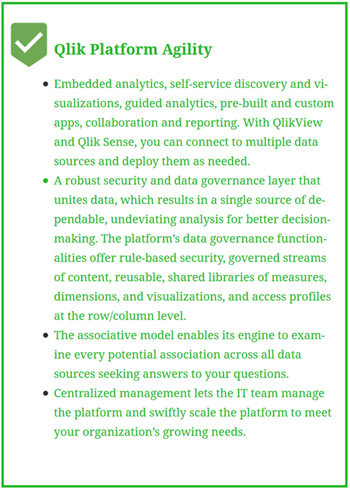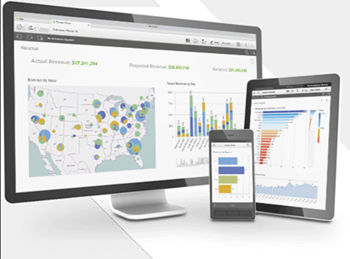Pegasystems rolls out new AI and virtual assistant capabilities
TAKE NOTE (Insights into Emerging Technology)

While virtually all software vendors are promoting new AI capabilities, customer service is one of the main areas where enterprises expect AI to actually drive revenue.
Pegasystems is rolling out new artificial intelligence (AI) and virtual assistant capabilities to help customer service agents respond quickly to customers via email, chat or phone.
The new capabilities will be a part of the latest versions of the Pega Customer Service application and the Pega Platform, which will be available at the end of the month. While virtually all software vendors are promoting new AI capabilities, customer service is one of the main areas where enterprises expect AI to actually drive revenue.
“When it comes to satisfying your customers, every second counts in the digital world,” Don Schuerman, CTO and VP of product marketing for Pegasystems, said in a statement. “These latest features reinforce Pega’s vision on the role of AI in augmenting the workforce – giving customer service agents access to insights and knowledge that elevates their performance.”.
FOR ONLINE CHATS: Pegasystems is specifically rolling out three new features, starting with an AI-augmented agent that assists live agents during online chats with customers. The Pega AI-Augmented Agent, as part of Pega Customer Service, gives a live agent suggested responses after contextually analyzing a customer message using natural language processing (NLP).
FOR EMAIL: Next, Pegaysystem is introducing the Pega Intelligent Virtual Assistant for Email, which will be available in both Pega Platform and Pega Customer Service. It automatically triages incoming emails, using NLP to understand the request and sentiment of each message. It then automatically opens a new service case and sends it to either another bot or a live agent.
FOR PHONE SUPPORT: The Pega Intelligent Interactive Voice Response (IVR) uses AI to create dynamic, personalized phone menu options for customers who call in for support. By analyzing the customer’s previous brand interactions and account information, it offers the most relevant assistance options for that customer.
Given the expectations for the use of AI in customer service, Pegasystems’ investments in this area are no surprise. The company also recently announced new compliance tools designed to help enterprises track their use of AI and make their algorithms more transparent and enable enterprises to better track usage.
UNDER DEVELOPMENT (Information Developers)
An Introduction To The Qlik Data Analytics Platform
How Well Do You Know Qlik BI ?
For organizations searching for business intelligence (BI) solutions to improve oversight of operations, the marketplace offers a vast array of options. BI tools deliver real-time insights based upon smart analytics, and this improves overall performance throughout the organization.
Qlik offers a unique approach to analytics that differentiates it from all other tools. Its platform provides deeper insights at a greater velocity than other BI tools. At its core is the associative model rather than the traditional predefined hierarchies that conventional, query-based analytics solutions offer.
The Qlik associative model is founded on the QIX engine, which is Qlik’s patented, associative data indexing, in-memory engine. The QIX engine is a high-performance inference and calculation engine that intuits the associations within the data, recalculates the analytics based on the context and delivers your selections and the associated values in highlighted format. In addition, the QIX engine will deliver unrelated values that frequently offer unique insight into your business.
This capability gives you a comprehensive overview of the data, without leaving any data out. You can explore solutions without the restrictions or limitations of traditional, query-based tools. You use simple searches for quick analysis regardless of the size of the data set.
In addition to the swift, relevant analytics the QIX engine provides, the Qlik platform is highly agile as your company grows and evolves. As your organization transforms, Qlik will adapt with a wide array of functionalities that highlighted below.

Q&A (Post your questions and get the answers you need)
Q. What is SAP BW/4HANA and how does it work?
A. BW/4HANA is an evolution of BW that is completely optimized and tailored to SAP HANA. The BW/4HANA code can only run on SAP HANA as it is interwoven with SAP HANA engines and libraries. Supposedly, the ABAP part is several million lines of code smaller compared to BW-on-HANA. It is free of any constraint to stay within a certain “common denominator scope” of SQL, like SQL92 or OpenSQL, but can go for any optimal combination the SAP HANA platform offers.
SIMPLE
SAP BW offers 10 to 15 different object types (building blocks like infocubes, multiproviders) to build a data warehouse. In BW/4HANA, there will be only 4 which are at least as expressive and powerful as the previous 15. They will, therefore, be easier to maintain, thus more flexible and less error-prone.
OPEN
BW/4HANA – as BW – offers a managed approach to data warehousing. This means that prefabricated templates (building blocks) are offered for building a data warehouse in a standardized way. This provides huge opportunities to optimize the resulting models for SAP HANA regarding performance, footprint, data life-cycle.
MODERN UI
BW/4HANA will offer modern UIs for data modeling, admin, monitoring that run in SAP HANA Studio or a browser.
PERFORMANCE
BW/4HANA will be free of any burdens and will leverage any optimal access to HANA. This will be especially important in the context of big data scenarios as HANA VORA offers a highly optimized “bridge” between the worlds of HANA and Hadoop/SPARK.
For a deeper learning experience, check out the course below on openSAP.


